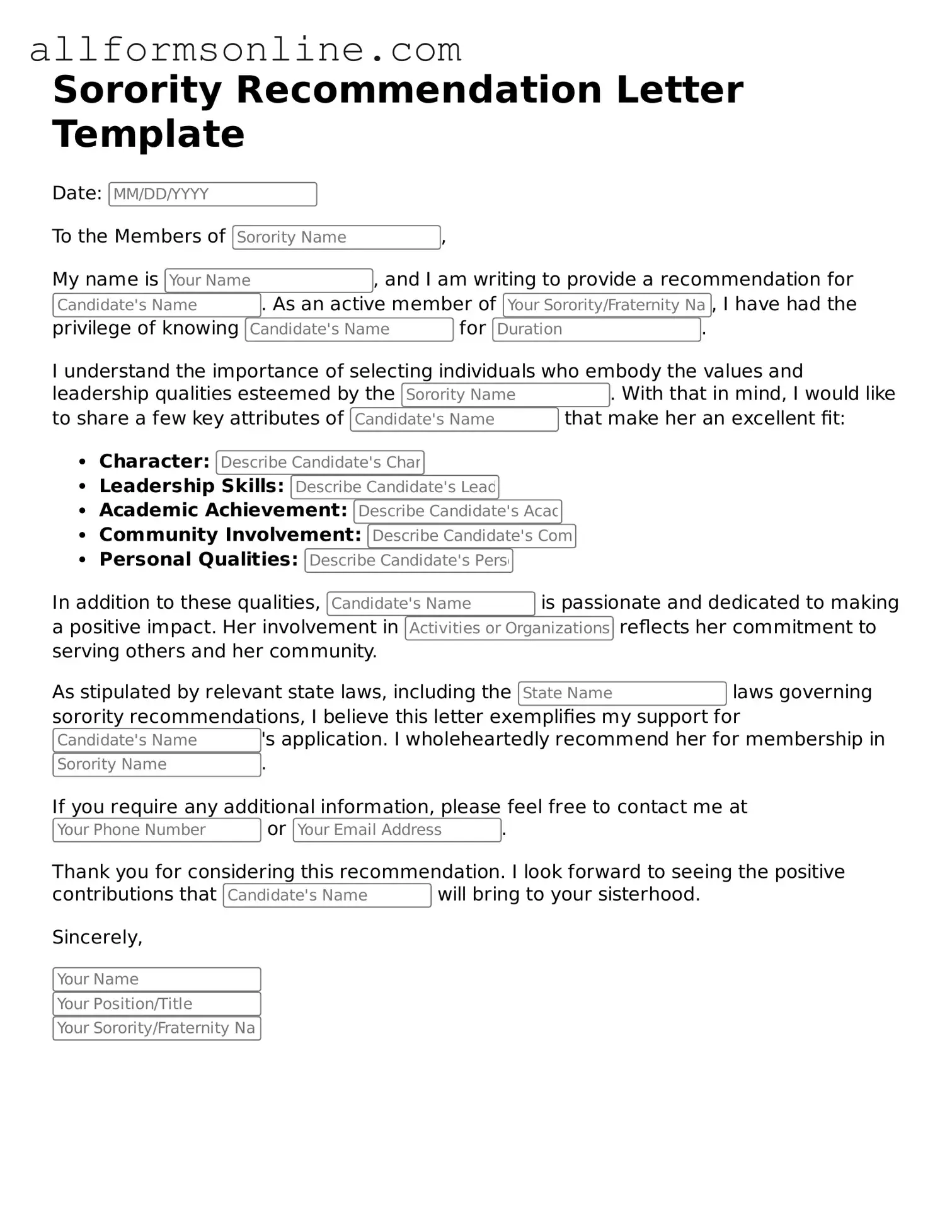What is a Sorority Recommendation Letter?
A Sorority Recommendation Letter is a document that supports a potential new member's application to join a sorority. It typically comes from an alumna of the sorority who knows the candidate well. This letter highlights the candidate's strengths, character, and suitability for membership, providing a personal touch that can enhance the application process.
Who should write a Sorority Recommendation Letter?
An ideal writer for a Sorority Recommendation Letter is an alumna of the sorority to which the candidate is applying. However, if an alumna is not available, a current member or someone who knows the candidate well and can speak to her qualities and experiences may also write the letter. The writer should be able to provide a genuine perspective on the candidate's personality and potential fit within the sorority.
What information should be included in the letter?
The letter should include basic information about the candidate, such as her name, school, and any relevant achievements. It should also discuss her character traits, leadership skills, and involvement in extracurricular activities. Personal anecdotes can make the letter more engaging. The writer should express their belief in the candidate's ability to contribute positively to the sorority and the campus community.
When should the Sorority Recommendation Letter be submitted?
It's best to submit the Sorority Recommendation Letter as early as possible, ideally before the recruitment process begins. Each sorority may have specific deadlines, so checking with the individual sorority for their timeline is essential. Early submission can ensure that the letter is considered during the selection process.
Can a candidate submit multiple Recommendation Letters?
Yes, a candidate can submit multiple Recommendation Letters. In fact, having letters from different sorority alumnae can provide a broader perspective on the candidate's qualifications. However, it's important to ensure that the letters are not redundant. Each letter should bring a unique viewpoint and highlight different aspects of the candidate's personality and achievements.
